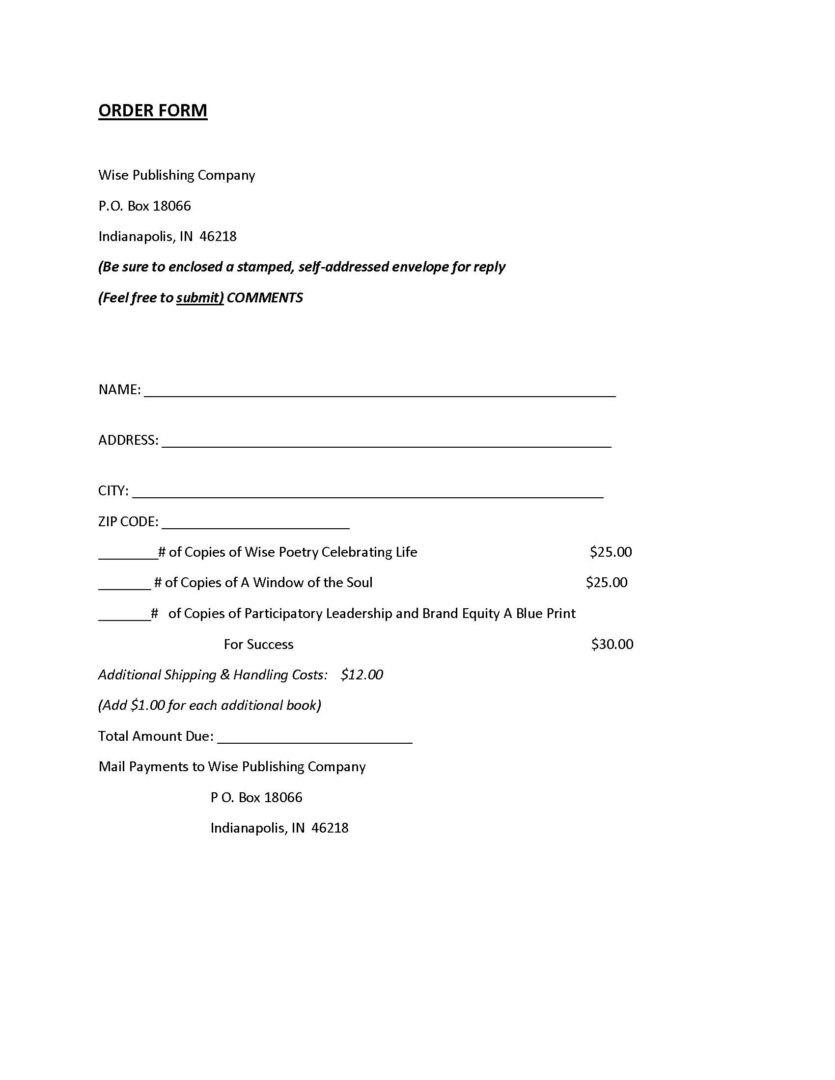KIRKUS REVIEW For “Participatory Leadership & Brand Equity – A Blue Print For Success!”
In this how-to guide for business leaders, Wise (Communication Studies/Indiana Univ. at Purdue Univ. Indianapolis; Window of the Soul, 2009, etc.) offers her take on common managerial styles and practices.
The author begins this friendly, informal manual with few familiar questions: for example, Wise ask readers if they have ever put forth their best effort a a company without receiving accolades or promotions. If so, she writes, it is not entirely the readers’ fault; instead, it could be a result of their managers’ leadership style. Wise then presents a thoughtful case for “participatory leadership” by drawing on numerous expert sources, such as Stephen R. Covey’s bestselling 1989 book, The 7 Habits of Highly Effective People. She defines leadership as the ability to create a positive environment where people feel empowered to be creative and seek opportunities for advancement. According to the author, participatory leadership allows for greater equality between employees and employers. By having more say about a company;’ direction, she says, employees will form a stronger psychological attachment to it, resulting in increased productivity, professional growth, and customer satisfaction. In this brief guide less than one hundred pages in length – Wise discuss several business terms, such as “brand equity,” or a brand’s commercial value. She uses Starbucks an example of a company with successful brand equity that sakes employee input and characterizes this as a successful participatory leadership style. The author also offers personal examples of similar styles she’s witnessed in her own career, highlighting Franklin University of Ohi’s team-building exercises.
Wise’s presentation sometimes has the feel of a term paper. However, her smooth prose is easy to read throughout, and she offers suggestions to ponder in her creation of a specific job position, “Director of Participatory Leadership and Brand Management,” which would require the participatory leadership style that she presents in the rest of the book. However, half of the work consists of comments by Wise’s students regarding her classes on fundamentals of communication and speech, which makes the main subject of the book easy to forget. A compelling topic that is hampered by an even presentation.
